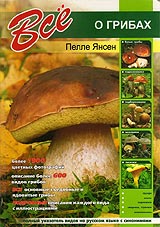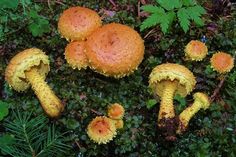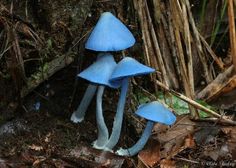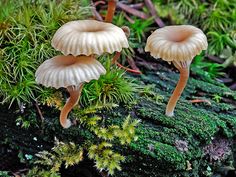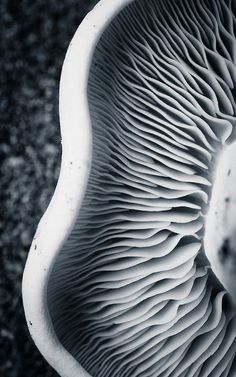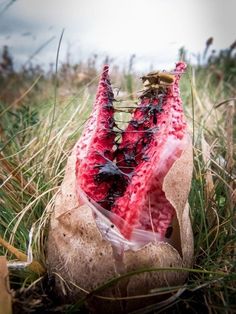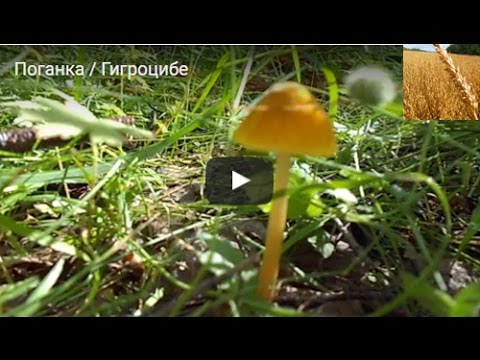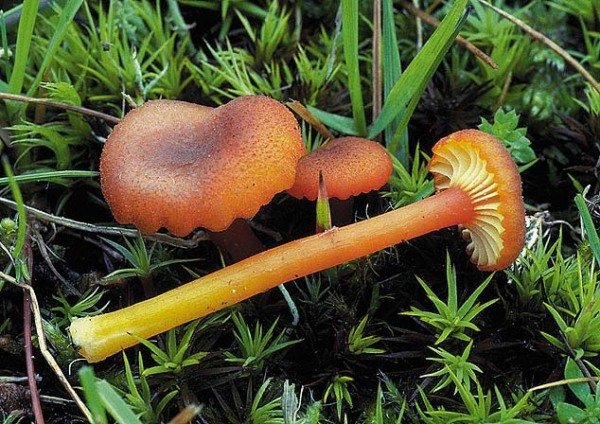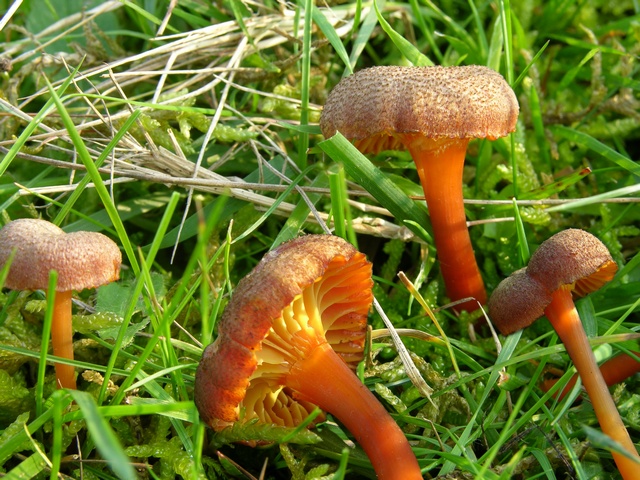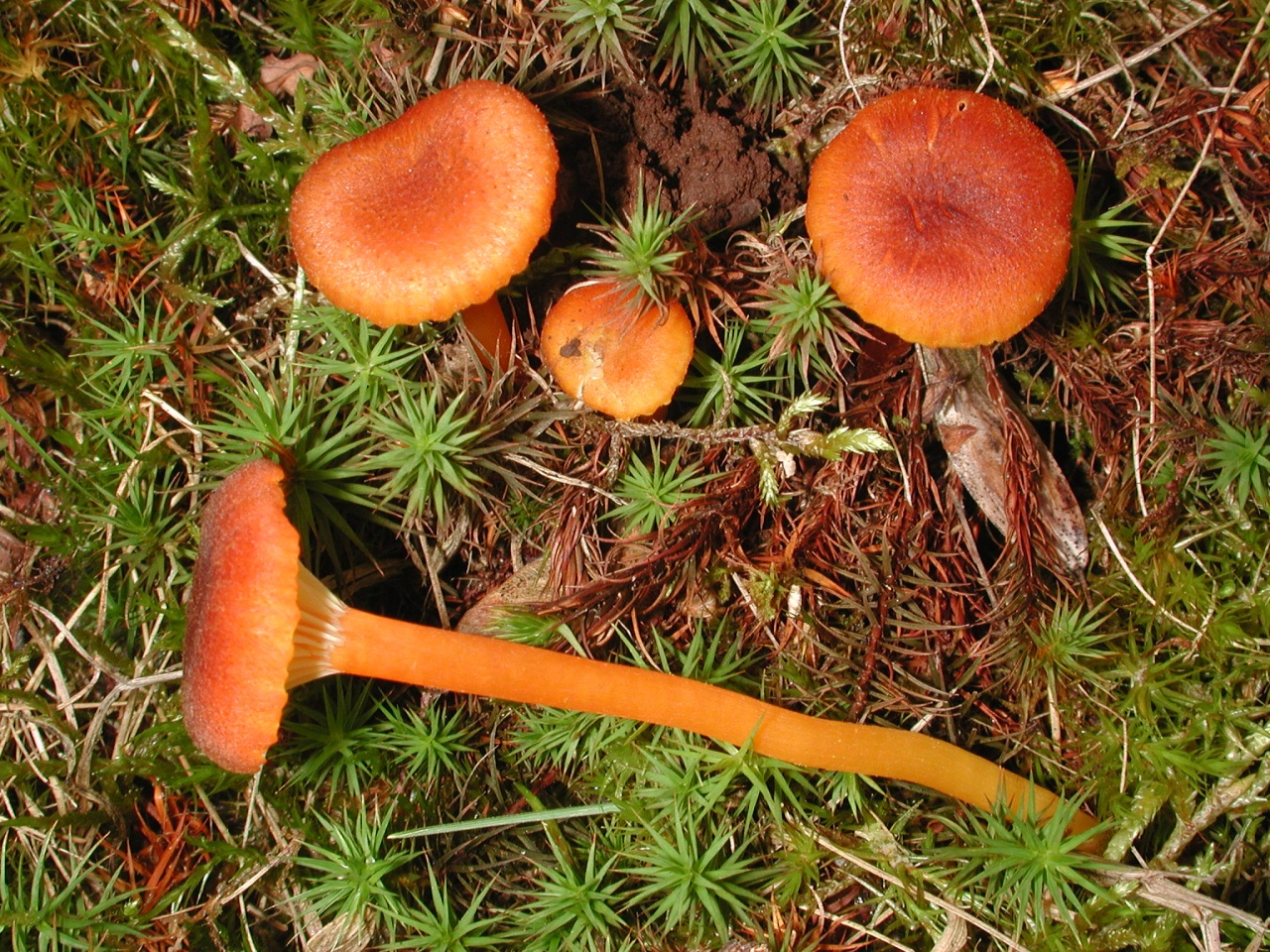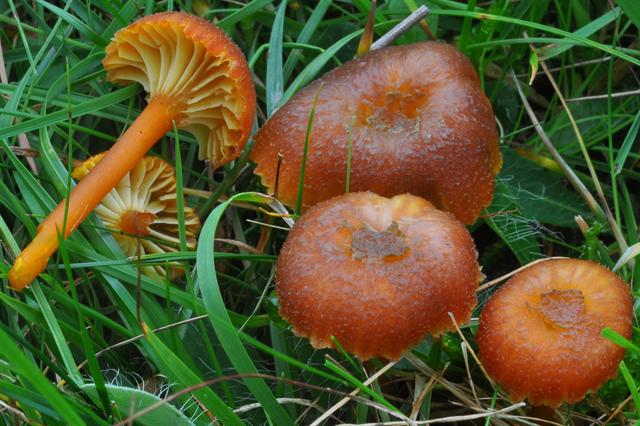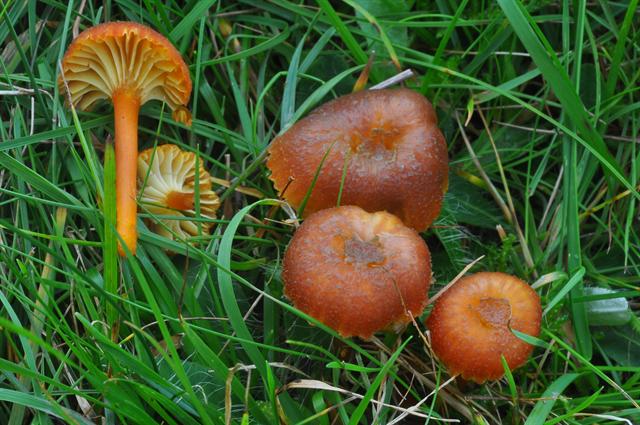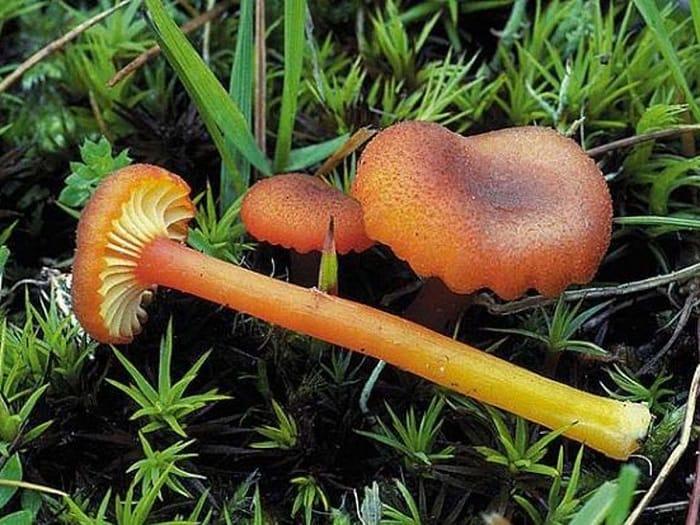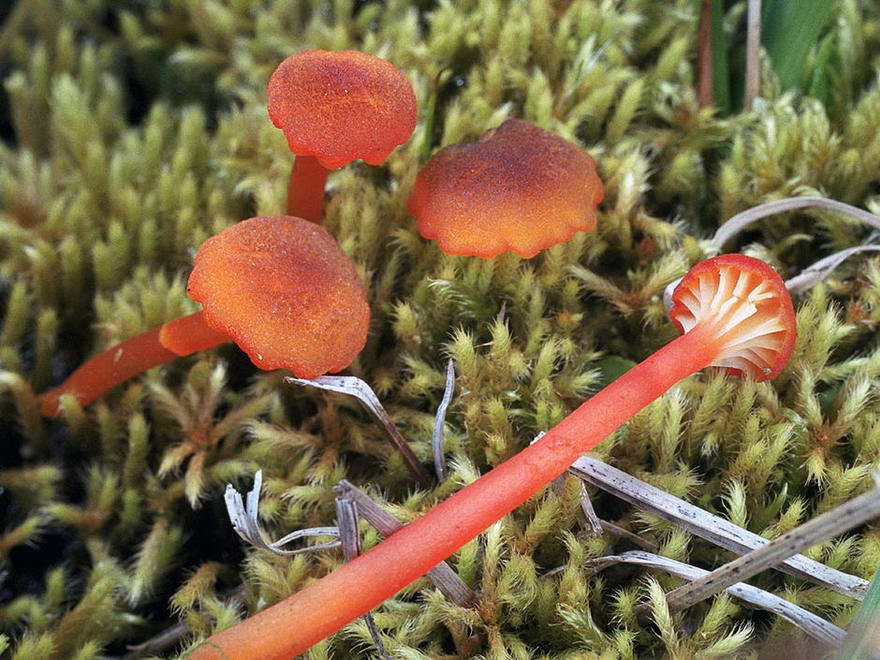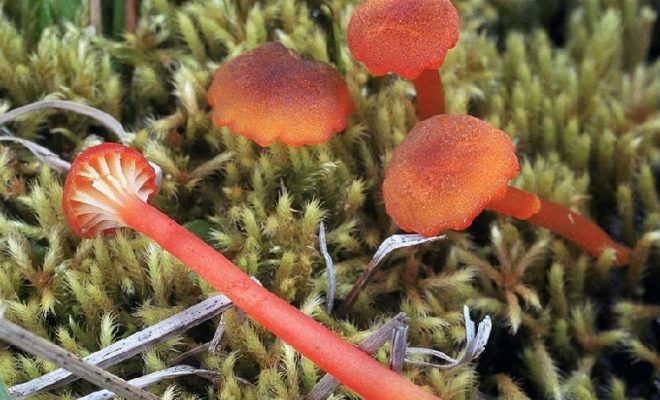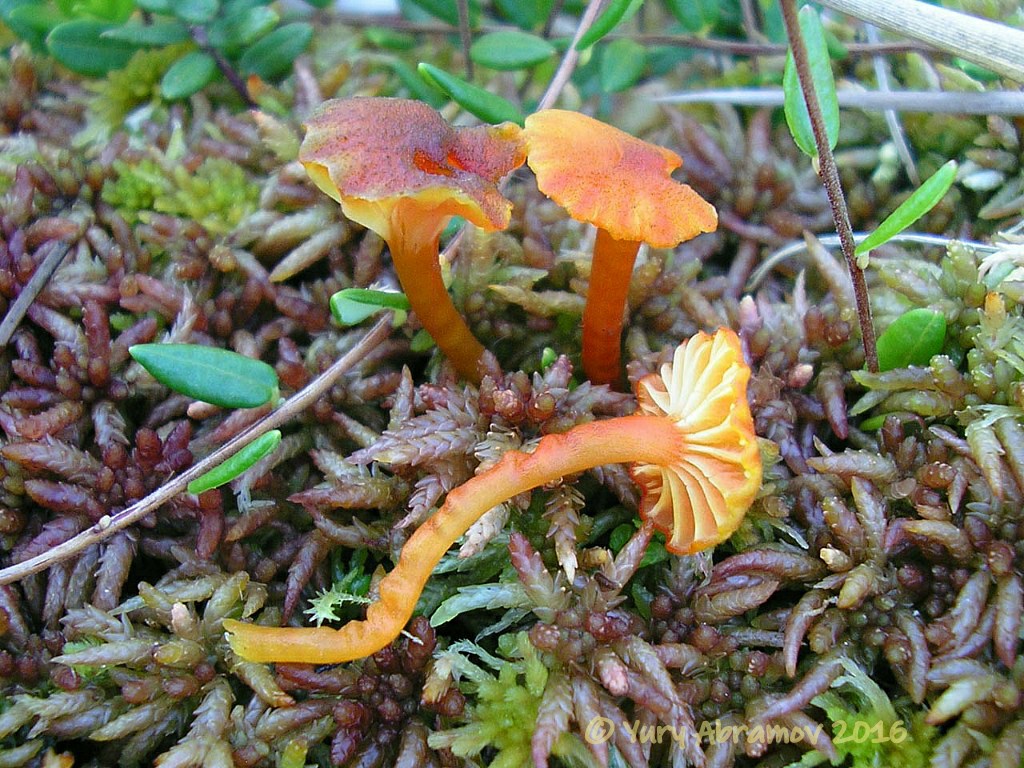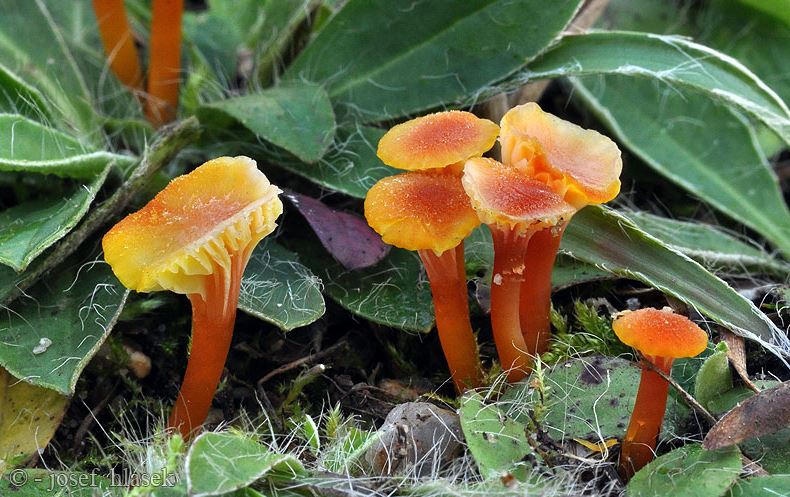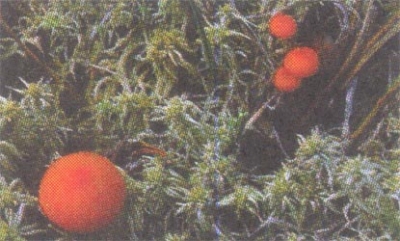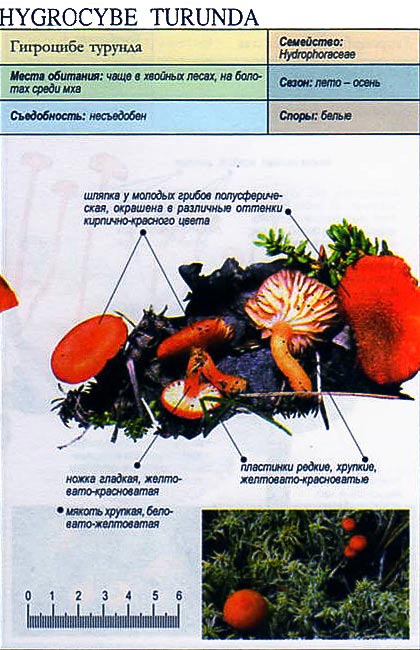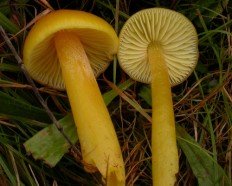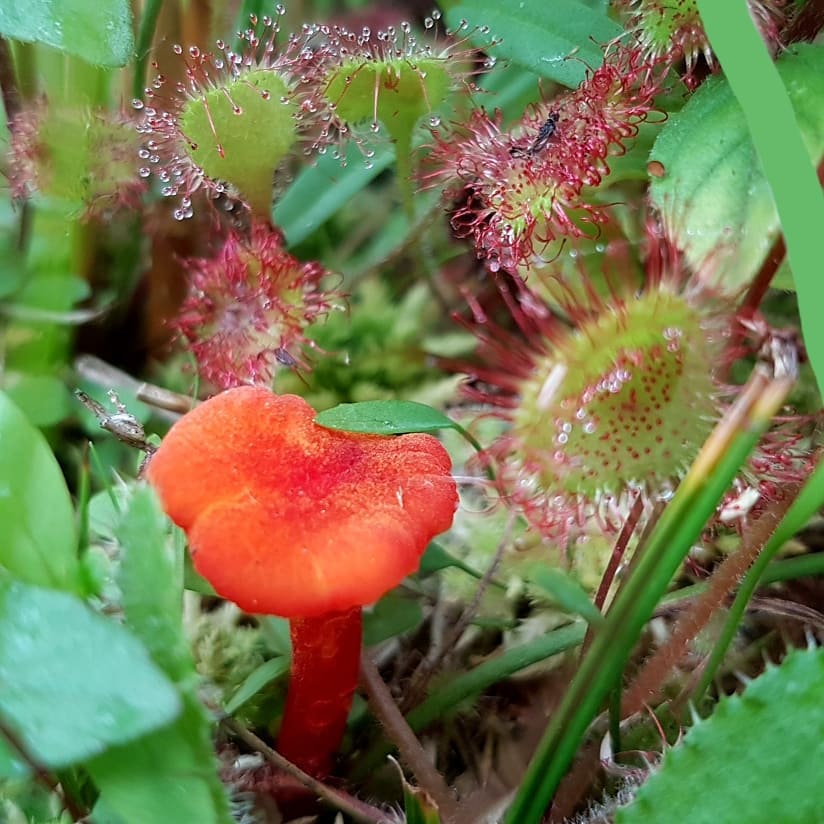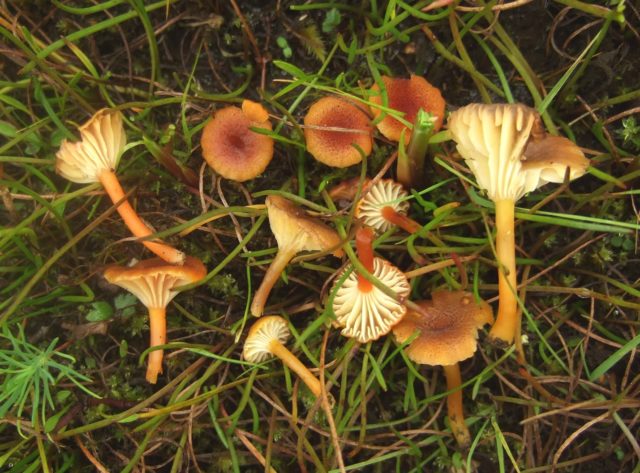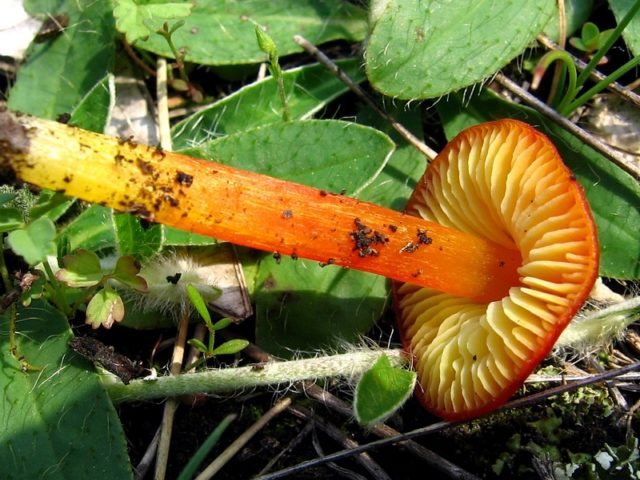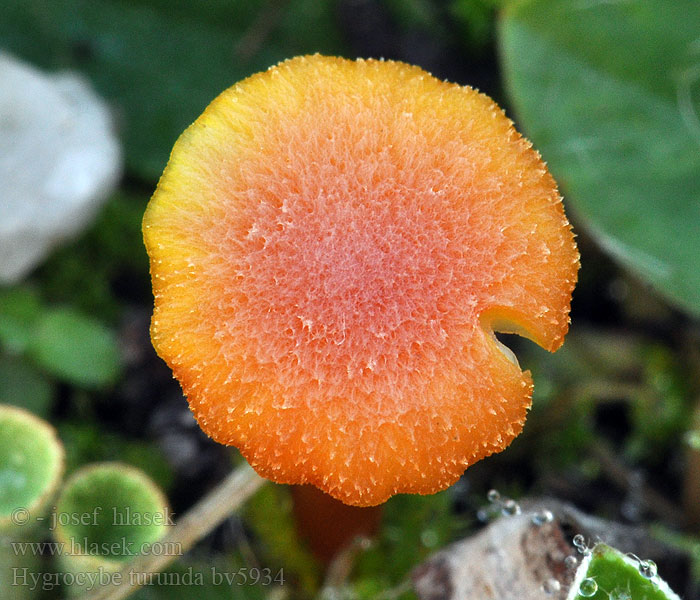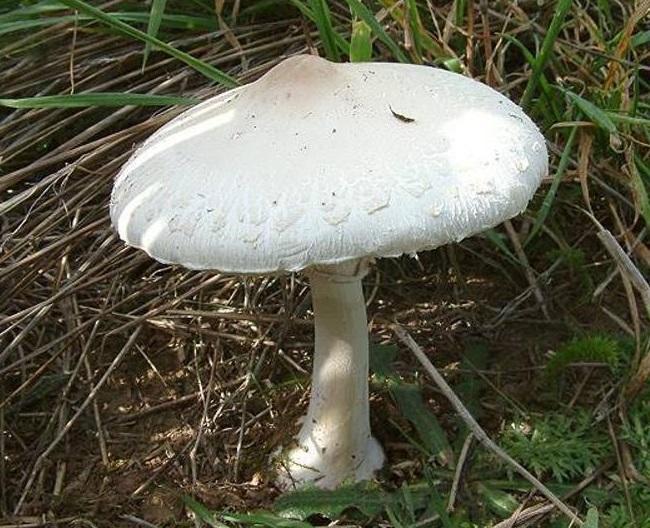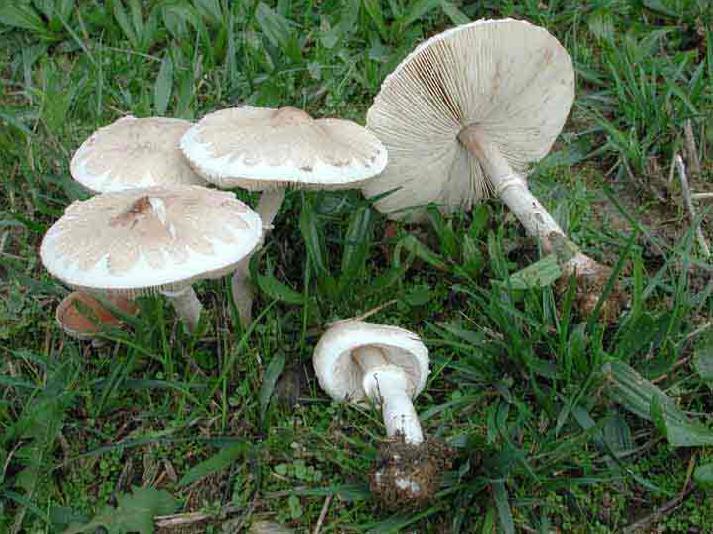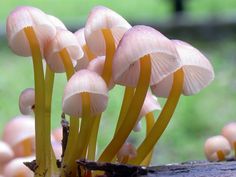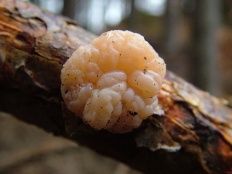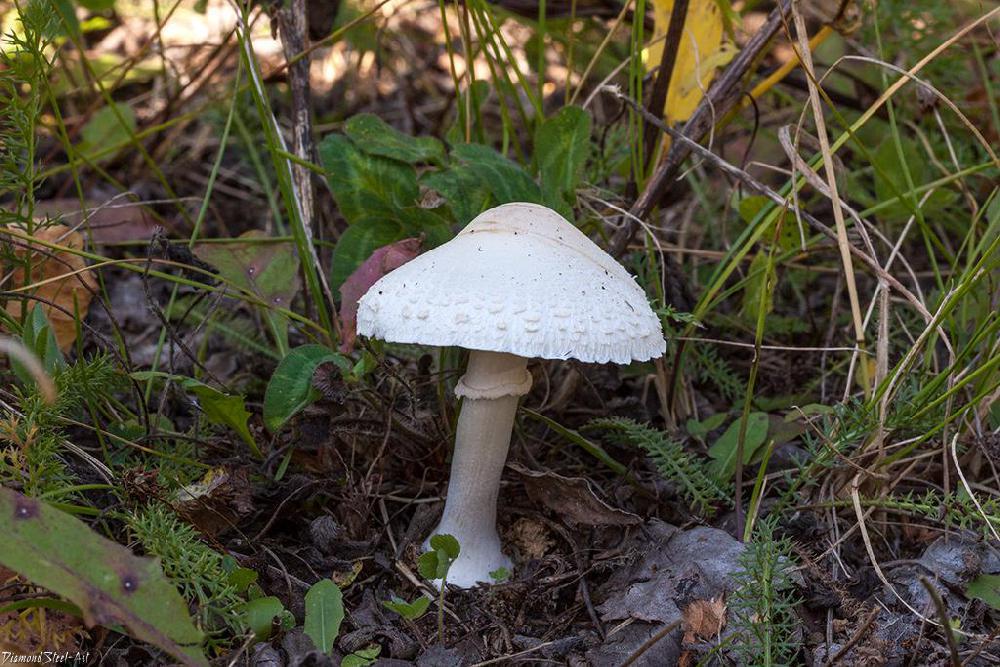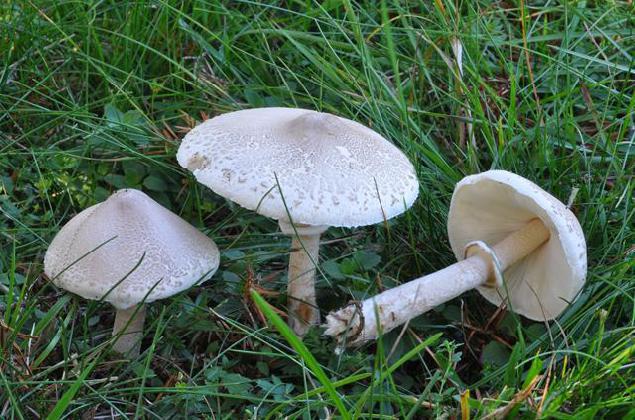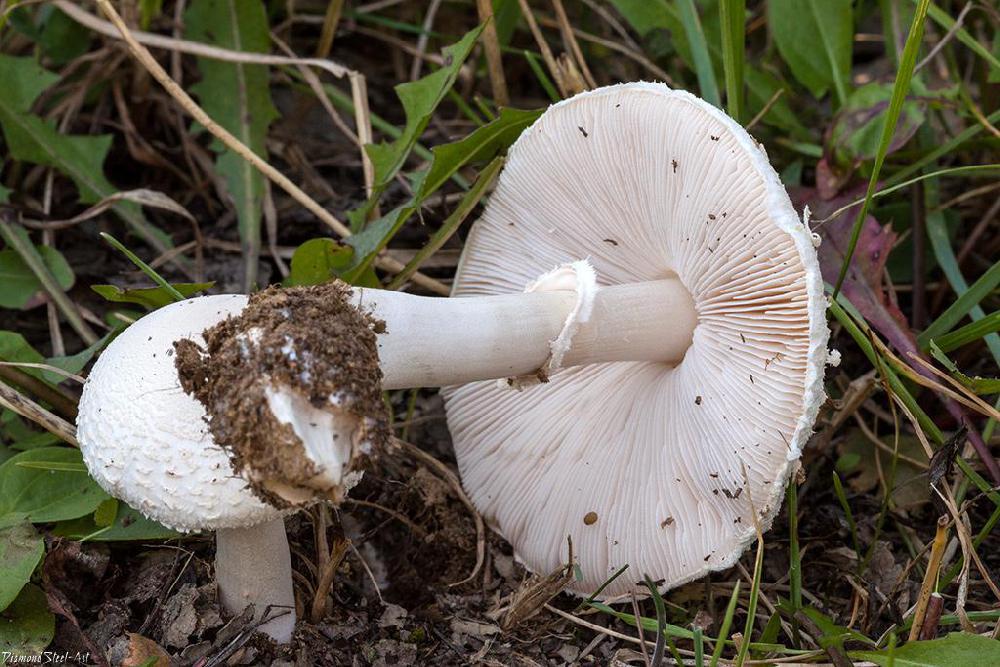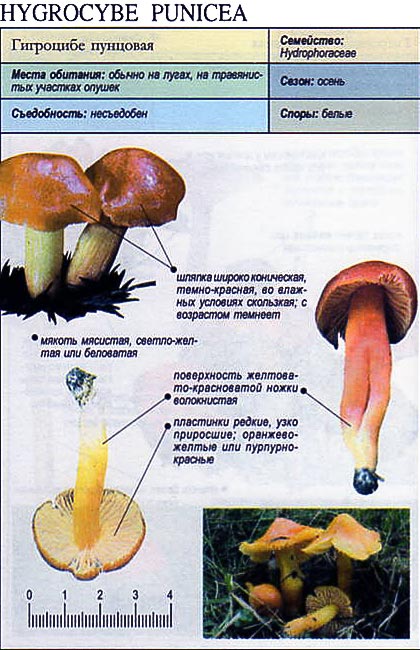Distinctive features of a cap-shaped hygrocybe
The diameter of the cap varies from 2 to 6 centimeters. A young mushroom has a pointed-shaped cap, in fact, thanks to this, the name came about. Over time, the shape of the cap becomes more sloping, and in mature mushrooms it spreads completely.
At first, the color of the mushroom is quite bright: coral-red, terracotta, wine-brown, orange, and at the end of the season the mushroom fades and becomes light pink. The central part of the cap is much lighter, even whitish. The surface can be sticky or dry. The edges are clearly serrated.
The pulp is pink, thin, and quickly falls apart in the hands. The plates are attached to the stem with the help of teeth. Their colors are mostly light, pale pink. They can be located frequently or infrequently.
The stem of this family of mushrooms can be quite long and reach 16 centimeters. But often there are cap-shaped hygrocybes with short legs that do not exceed 2 centimeters. The leg has a small thickness - only 1 centimeter, so it is very fragile. The surface of the leg is completely smooth, without roughness. The leg is firmly fixed in the substrate. Its shape can be ovoid or elliptical. The spore sac is white or light cream.
Spreading cap-shaped hygrocybe
These mushrooms originally became known in Europe, North America and Japan. Most often, cap-shaped hygrocybe grow in groups, and separately growing specimens are rare.
These mushrooms grow in humus and soil, they prefer rich soil. They can be found in mixed and coniferous forests. Cap-shaped hygrocybe is a moderately common type of mushroom.
Edible hygrocybe cap-shaped
The cap-shaped hygrocybe is considered an edible species, but mushroom pickers collect it quite rarely, since it does not differ in special taste, there is also no smell.
Related species
- Hygrocybe scarlet, she is also hygrocybe red, has a variable color from bright scarlet to pale orange. These mushrooms grow in meadows, meeting from late summer to late autumn. Scarlet hygrocybe is not popular as an edible species, but it is a non-poisonous mushroom;
- Hygrocybe wax is a bright orange mushroom. They grow singly or in small groups. The distribution area covers Europe and North America. The wax hygrocybe is inedible, but, most likely, non-toxic, since no cases of poisoning have been recorded;
- Oak hygrocybe has a yellow-orange color. The growing places of these mushrooms are deciduous and mixed forests, most often they are found near oak trees. The mushroom is not poisonous, but has no nutritional value;
- Hygrocybe cinnabar red is distinguished by cinnabar red color. It grows in mossy and grassy places, in glades, meadows and wetlands. Occurs from July to August. The opinions of mushroom pickers differ on the nutritional qualities of this mushroom, some claim that it is an inedible mushroom, and others that they can be eaten, but they have no practical significance;
- The conical hygrocybe is characterized by a yellowish, orange and in some places reddish color. These mushrooms grow mainly in young rare plantings and along roads, and in forests they are more rare. They bear fruit from May to October. The conical hygrocybe is not suitable for eating, as it can provoke an upset stomach. It is considered a slightly poisonous mushroom;
- The beautiful hygrocybe has a very varied color: light wine-gray, lilac-gray, olive, red-red and red-orange, sometimes it can be pinkish and greenish. These mushrooms are widespread in South America, North America, Europe and Japan. They grow in groups on humus, meeting in coniferous and mixed forests;
- Crimson hygrocybe is distinguished by its crimson or red color. Turning into orange. These fungi are ubiquitous in humid, open areas. It is a good-tasting edible mushroom that can be fried and canned;
- Hygrocybe turunda is a bright red inedible mushroom found in summer and autumn;
- Hygrocybe acutely conical is characterized by a yellow-orange or yellow color. Grows in meadows and pastures of various types. Fruiting time is in summer and autumn. These are inedible mushrooms, as they contain toxic substances.
Hygrocybe conical edibility, what it looks like, where it grows, how to distinguish it, photo
Hygrocybe cone-shaped: description and photo
Hygrocybe conica is not such a rare mushroom. Many saw him, even kicked him down. Mushroom pickers sometimes call it a wet head. It belongs to the lamellar mushrooms from the Gigroforov family.
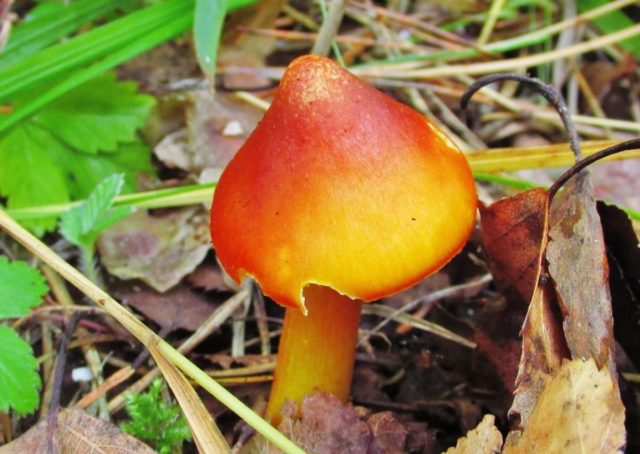
How does a cone-shaped hygrocybe look
A description is needed, because novice mushroom pickers very often take all the fruit bodies that come to hand, without thinking about their benefits or harms.
The cone-shaped hygrocybe has a small cap. The diameter, depending on age, can be 2-9 cm. In young mushrooms, it is in the form of a pointed cone, bell or hemispherical. In mature wet heads, it becomes broadly conical, but a tubercle remains at the very top. The older the cone-shaped hygrocybe, the more breaks on the cap, and the plates are perfectly visible.
When it rains, the surface of the crown shines and becomes sticky. In dry weather, it is silky and shiny. In the wilderness, mushrooms with red-yellow and red-orange caps are found, and the tubercle is somewhat brighter than the entire surface.
Legs are long, even, straightened, fine-fiber and hollow. At the very bottom, they have a small thickening. In shade, they are almost the same as the caps, but the base is whitish. There is no mucus on the legs.
On some specimens, the plates are attached to the cap, however, there are cone-shaped hygrocybe, in which this part is free. The plates are narrow right in the center, but widen at the edges. The part located at the bottom is yellowish. The older the mushroom, the grayer this surface. Turns greyish yellow when touched or pressed.
They are distinguished by a thin and very fragile pulp. In shade, it does not stand out in any way from the fruiting body itself. Turns black when pressed. The pulp does not stand out with its taste and aroma, they are faceless.
Ellipsoidal spores are white. They are miniature - 8-10 by 5-5.6 microns, smooth. There are buckles on the hyphae.
Where the cone-shaped hygrocybe grows
Vlazhnogolovka prefers young plantings of birches and aspens. Loves to breed in moorlands and along roads. Where there is a lot of grassy cover:
- along the very edge of deciduous forests;
- on the edges, meadows, pastures.
Single specimens can be seen in pine forests.
Fruiting of a wet head is long. The first mushrooms are found in May, and the last ones grow until frost.
Is it possible to have a cone-shaped hygrocybe
Regardless of the fact that the cone-shaped hygrocybe is considered weakly poisonous, it should not be collected. And the thing is that it will cause big problems with the intestines.
Kindred hygrocybe cone-shaped
Other types of hygrocybe should be distinguished, which are similar to a cone-shaped one:
- Hygrocybe turunda or lint. In young specimens, the cap is convex, then a depression appears in it. Flakes are perfectly visible on a dry surface. In the very center, it is red, at the edges it is much lighter, almost yellow. The leg is cylindrical, thin, with a slight curvature. A whitish bloom is visible on the base. The fragile whitish pulp is inedible. Fruiting lasts from May to October. Refers to inedible.
- Oak hygrocybe is very similar to a wet head. Young mushrooms have a cone-shaped cap with a diameter of 3-5 cm, which is then leveled. It is yellow-orange in color. When the weather is damp, mucus appears on the cap.The plates are rare, of the same shade. The taste and smell of the yellowish pulp is pale. Yellow-orange legs up to 6 cm long, ultra-thin, hollow, slightly curved.
- Oak hygrocybe, unlike its congeners, is conditionally edible. Occurs in mixed forests, but most expediently bears fruit under oak trees.
- The hygrocybe is acutely conical or persisting. The shape of the yellow or yellow-orange cap changes with age. First of all, it is conical, after which it becomes wide, but the tubercle still remains. There are fibers on the mucous surface of the cap. The pulp is virtually odorless and tasteless. The legs are the highest - up to 12 cm, diameter - about 1 cm.
Conclusion
The cone-shaped hygrocybe is an inedible, weakly dangerous mushroom. It can cause problems with the gastrointestinal tract, so it is not eaten. But being in the wilderness, you should not knock down the fruit bodies with your feet, because in nature there is nothing useless. Basically, the inedible and overgrown gifts of the forest are considered food for animals.
Description
Cap ∅ 0.5-12 cm, conical, bell-shaped or hemispherical, then prostrate, sometimes with a tubercle or depressed in the center, smooth or scaly, fibrous, dry, moist or slimy, usually brightly colored, red, orange-yellow, sometimes darkening or blackening with age.
The plates are adherent or descending, thick, sparse, from white to brightly colored - red, pink, yellow.
The stem is cylindrical, often narrowed towards the base, dry or sticky, smooth or fibrous, often twisted, one color with a cap, hollow.
Spore white powder.
Hygrocybe yellow-green (Hygrocybe chlorophana)
or
Hygrocybe dark chlorine

This mushroom belongs to the hygrophoric family. It is very small, somewhat reminiscent of a magical fairy mushroom, largely due to its acid color, thanks to which it seems that the mushroom is illuminated from the inside. The mushroom can be used for food, but its taste is very low.
The diameter of the cap can vary. There are very small mushrooms with a cap up to 2 cm in a circle, and there are also those in which the cap can reach 7 cm.At the beginning of its growth period, the yellow-green hygrocybe looks like a hemisphere, and during growth it acquires a more convex shape. Then, on the contrary, it changes almost to flat.
Sometimes you can find mushrooms in which there is a small tubercle inside the cap, and in other cases, on the contrary, there may be a small depression in the center. The hat usually has a very bright, catchy color, mostly orange-yellow or lemon-yellow. On the surface, the mushroom is covered with a sticky base, the edges are usually slightly ribbed. The cap has the property of increasing in volume (hygrophane) due to the fact that a certain amount of liquid is retained inside the pulp.
If you press lightly on the pulp, then it can break immediately, because it has a very fragile structure. The pulp is usually also yellow in a wide variety of shades (from bright to light). The yellow-green hygrocybe does not have a special taste, there is practically no smell, only a mushroom aroma is slightly felt. The plates of the fungus adhere to the stem, during ripening they are white, and as they grow, they turn yellow or may become brighter (for example, yellow-orange).
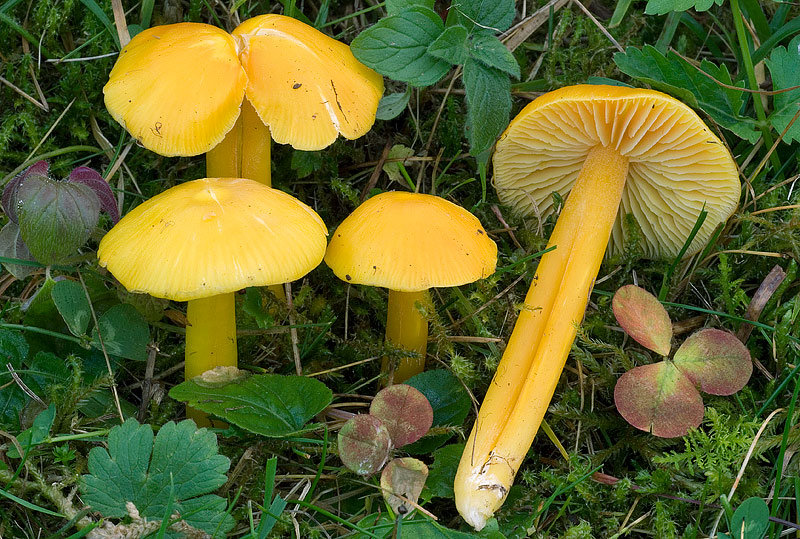
Hygrocybe dark chlorine sometimes has a very short leg (about 3 cm), and sometimes quite long (about 8 cm). The leg is rarely more than 1 cm thick, so it is very fragile. On the outside, it is usually wet and sticky, although the inside becomes hollow and dry with age. The color of the leg is always similar to the color of the cap or it is lighter by several tones. Remnants of bedspreads are completely absent. A mealy bloom is usually present near the plates, the spore powder is usually white. Spores are ellipsoidal or ovoid, they are colorless, 8x5 microns in size.
Hygrocybe dark chlorine is less common than other types of hygrocybe.It is most widely distributed in Eurasia and North America, but it does not grow en masse there either. More often you can see single mushrooms, occasionally small groups are found. These mushrooms are very fond of growing on forest soils; they also prefer meadow grasses. Their growing season is very long - it begins in May and ends only in October.
An excerpt characterizing the red hygrocybe
“All right, all right, you’ll tell me later,” Princess Marya said, blushing. “Let me ask her,” said Pierre. - Have you seen it yourself? - he asked. - Why, father, she herself was honored. There is such a radiance on the face, like the light of heaven, and from mother's cheek it drips and drips ... "Why, this is a deception," Pierre said naively, listening attentively to the wanderer. - Oh, father, what do you say! - Pelageyushka said with horror, addressing Princess Marya for protection. “They are deceiving the people,” he repeated. - Lord Jesus Christ! - said the wanderer, crossing herself. “Oh, don’t tell, father. So one anaral did not believe, he said: "the monks are deceiving," but as he said, he went blind. And he dreamed that Mother Pechersk came to him and said: "Believe me, I will heal you." So he began to ask: take and take me to her. This I tell you the true truth, I saw it myself. They brought him blind right to her, came up, fell, said: “heal! I will give it to you, he says, what the king was pleased with. " I saw it myself, father, the star was embedded in it. Well, I have received my sight! It is a sin to say so. God will punish, ”she said instructively to Pierre. - How did the star end up in the image? Pierre asked. - Have you been promoted to generals and mother? - said Prince Andrew smiling. Pelageyushka suddenly turned pale and threw up her hands. - Father, father, sin is you, you have a son! She began, suddenly turning from pallor into bright color. - Father, what did you say that, God forgive you. - She crossed herself. - Lord, forgive him. Mother, what is this? ... - she turned to Princess Marya. She got up and almost crying began to collect her purse. She evidently was both scared and ashamed that she enjoyed the benefits in the house where they could say this, and it is a pity that now she had to be deprived of the benefits of this house. - Well, what kind of hunt are you? - said Princess Marya. “Why did you come to me?…” “No, I'm joking, Pelageyushka,” said Pierre. - Princesse, ma parole, je n'ai pas voulu l'offenser, that's just me. Do not think, I was joking, - he said, smiling timidly and wanting to make amends. - It’s me, and he’s just joking. Pelageyushka stopped incredulously, but there was such sincerity of remorse in Pierre's face, and Prince Andrey looked so meekly now at Pelageyushka, now at Pierre, that she gradually calmed down.
Application
Sarcoscifa is widely used for medical purposes. For example, they dry and drink powder diluted in water. It helps to stop bleeding, quickly heals wounds, and affects the proper functioning of the gastrointestinal tract.
In food, sarcoscifa can be used only after heat treatment. To do this, the mushroom is washed well, cleaned of debris, and then sent to boiling water for several minutes.
The boiled mushroom can already be cooked in the future, added to various dishes, or served as a separate snack.
The taste properties of sarcoscife are very, very high. This mushroom has a slightly spicy taste, slightly sour. However, it is absolutely not nasty and can even decorate any dish with its own special touch.
However, after heat treatment, the bright red color disappears. And this means that it will not be so impressive to look like a part of any sarcoscif's dish.
Mushroom expert
The author of this blog. I collect, grow, cook mushrooms!
Ask a Question
Ask an expert
Is Sarcoscifa edible or not?
Most official sources say that the mushroom is edible.
Definitioner
- Basidia (Basidia)
-
Lat. Basidia. A specialized structure of sexual reproduction in fungi, inherent only in Basidiomycetes.Basidia are terminal (end) elements of hyphae of various shapes and sizes, on which spores develop exogenously (outside).
Basidia are diverse in structure and method of attachment to hyphae.
According to the position relative to the axis of the hypha, to which they are attached, three types of basidia are distinguished:
Apical basidia are formed from the terminal cell of the hypha and are located parallel to its axis.
Pleurobasidia are formed from lateral processes and are located perpendicular to the axis of the hypha, which continues to grow and can form new processes with basidia.
Subasidia are formed from a lateral process, turned perpendicular to the axis of the hypha, which, after the formation of one basidium, stops its growth.
Based on morphology:
Holobasidia - unicellular basidia, not divided by septa (see Fig. A, D.).
Phragmobasidia are divided by transverse or vertical septa, usually into four cells (see Fig. B, C).
By type of development:
Heterobasidia consists of two parts - hypobasidia and epibasidia developing from it, with or without partitions (see Fig. C, B) (see Fig. D).
Homobasidia is not divided into hypo- and epibasidia and in all cases is considered holobasidia (Fig. A).
Basidia is the place of karyogamy, meiosis and the formation of basidiospores. Homobasidia, as a rule, is not functionally divided, and meiosis follows karyogamy in it. However, basidia can be divided into probasidia - the site of karyogamy and metabasidia - the site of meiosis. Probasidium is often a dormant spore, for example in rust fungi. In such cases, probazidia grows with metabasidia, in which meiosis occurs and on which basidiospores are formed (see Fig. E).
See Karyogamy, Meiosis, Gifa.
- Pileipellis
-
Lat. Pileipellis, skin - differentiated surface layer of the cap of agaricoid basidiomycetes. The structure of the skin in most cases differs from the inner flesh of the cap and may have a different structure. The structural features of pileipellis are often used as diagnostic features in descriptions of fungi species.
According to their structure, they are divided into four main types: cutis, trichoderma, hymeniderma and epithelium.
See Agaricoid fungi, Basidiomycete, Cutis, Trichoderma, Gimeniderm, Epithelium.
- Cutis
-
The type of cap skin, consists of creeping non-gelatinized hyphae located parallel to the surface. The surface of the cap looks smooth.
Lat. Cutis.
See Gifa.
Description of hygrocybe scarlet.
It is easy to recognize a red hygrocybe, since it has a very bright color - its cap and leg are bright red, sometimes with an orange tint. It is due to the rich color that this hygrocybe got its name. In size, the hygrocybe is small red - its cap does not exceed 3 centimeters in diameter. In young specimens, the shape of the cap is hemispherical or conical, but after ripening it becomes convex or flat. The edges of the cap are thin, so they can crack.
This is a lamellar mushroom, under its cap there are also orange or red plates, but in youth they are yellowish. The plates are thick in shape, they are rarely located.
The plates grow together with the teeth with the leg. Mushroom spores are ellipsoidal, smooth, white in color. The pulp is bright red or orange-red; at the break, its color does not change.
The leg is thin and long - up to 7 centimeters high and 0.3-1 centimeters wide. The shade of the leg matches the cap, and in some cases it is more saturated. The leg is cylindrical in shape; it often bends during growth. The leg is hollow inside. There is no ring on it.
Places of growth of red hygrocybe.
These fungi inhabit grassy forests and fertile meadows. Because they prefer to grow in humid locations, they are often referred to as wetheads. Fruiting red hygrocybe from summer to autumn.
Evaluation of the edibility of red hygrocybe.
The very bright color of this mushroom often misleads mushroom pickers - they believe that there is a poisonous representative of the mushroom kingdom in front of them.In fact, this mushroom can be used in cooking, but it does not have a high taste. Red hygrocybe can be boiled, stewed and fried.
Related species.
Oak hygrocybe is considered conditionally edible. Her cap varies from conical to conically extended. Its colors are yellow-orange. In rainy weather, the surface of the fungus becomes slimy. The leg is twisted, smooth. The pulp is fleshy, yellowish, without a pronounced taste and aroma.
Oak hygrocybe bears fruit in the autumn. Places of growth are deciduous and mixed forests, most often these mushrooms are found next to oak trees, which is emphasized by the name.
Meadow hygrocybe is an edible relative of red hygrocybe. The color of its fruiting body is light brown. The shape of the cap is convex. The leg is cylindrical, tapering downward.
Most often, meadow hygrocybe grows in dry and wet meadows, hiding among the grasses. In rare cases, they come across in light grassy forests.
Conical hygrocybe
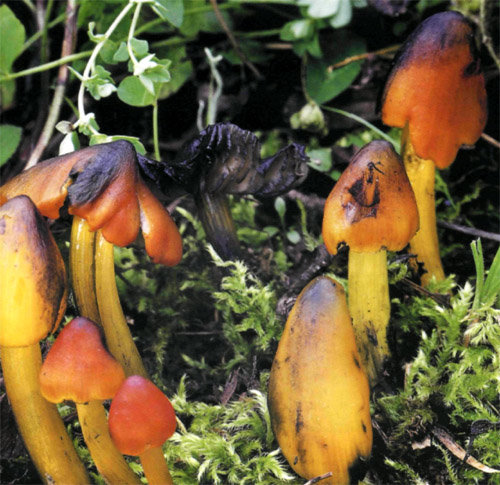
Conical hygrocybe (Hygrocybe conica)
Hat: cap diameter up to 6 cm. Pointed conical shape. Mature mushrooms have a wide-conical shape with a sharp tubercle in the center of the cap. The surface of the cap is almost smooth, fine-fibred. In rainy weather, the cap is slightly sticky, shiny. In dry weather, it is silky and shiny. The surface of the cap is colored orange, yellowish or reddish in places. The tubercle is darker and brighter in color. A mature mushroom of a darker color. The mushroom also darkens when pressed.
Plates: attached to the cap or loose. At the edges of the cap, the plates are wider. Are yellowish in color. In mature mushrooms, the plates turn gray. When pressed, they change color to grayish-yellow.
Leg: straight, flat along the entire length or slightly thicker at the bottom. The leg is hollow, fine-fiber. Yellow or orange in color, not mucous. At the base, the leg has a whitish color. In places of damage and pressure, the leg turns black.
Flesh: thin, fragile. The same color as the surface of the cap and legs. When pressed, the pulp also turns black. The conical hygrocybe (Hygrocybe conica) has an expressionless taste and smell.
Distribution: Found mainly in rare young plantings, along roads and on heather wastelands. Fruiting from May to October. It grows among grassy landscapes: in meadows, pastures, glades, and so on. Less common in forests.
Edible: The conical hygrocybe (Hygrocybe conica) is not consumed. May cause mild stomach upset. It is considered mildly poisonous.
Spore powder: white.
Similarity: Hygrocybe conic (Hygrocybe conica) bears similarities with three other types of mushrooms with blackening fruiting bodies: hygrocybe pseudoconica (Hygrocybe pseudoconica) - a weakly poisonous mushroom, hygrocybe conical (Hygrocybe conicoides), hygrocybe chlorine-like (Hygrocybe chloroides). The first is distinguished by a more shiny and blunt-conical cap of a larger diameter. The second - the plates and a layer of red flesh that turn red with the age of the fungus, the third - because its fruit bodies are not red and orange.

